For individuals
Mā te takitahi


Exotic (from overseas) caulerpa are rapidly spreading seaweeds that threaten our marine life and recreational, cultural and commercial activities.
Two species of these pest seaweeds have been found in seven locations around the upper North Island – in the Hauraki Gulf, Northland and Coromandel.
Since exotic caulerpa was first found in New Zealand in 2021, there has been a comprehensive effort by Biosecurity New Zealand and partners mana whenua, regional councils and Department of Conservation to understand the pest and its distribution, prevent it spreading, and explore ways to remove it. We are dealing with a large incursion and given its scale, eradicating it from New Zealand would be extremely difficult. We are focused on reducing its impact in specific locations by removing or killing it.
Following a $5 million funding boost announced in February, 6 projects were set up - mostly to accelerate work on removal technologies and improved surveillance.
At Omakiwi Cove in the Bay of Islands, Northland Regional Council and mana whenua (funded by MPI) are working on removal techniques. The flagship project is developing a large-scale suction dredge to remove exotic caulerpa from the seafloor.
It’s hoped this will be able to effectively removel large areas of caulerpa, and if successful, could be deployed in other affected areas. The team is also looking at ways to control exotic caulerpa in the intertidal zone which is unable to be dredged.
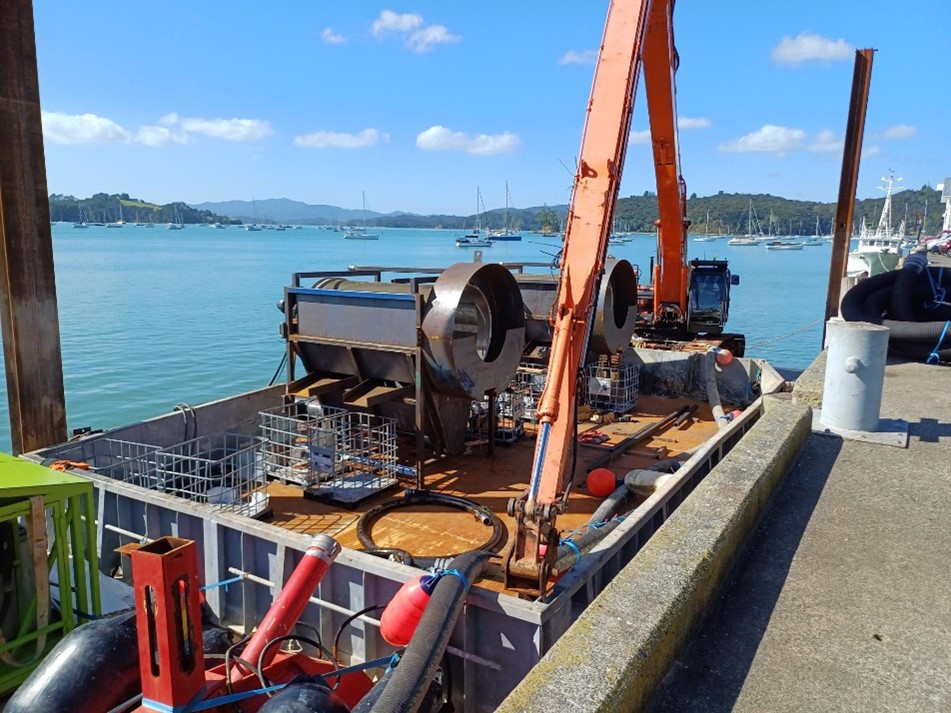
At the Iris Shoal off Kawau Island, we’ve funded a partnership between Ngāti Manuhiri and NIWA to use a smaller-scale suction technique where divers control a smaller vacuum device. The team started on 26 April and have been removing around 800 square metres of caulerpa a day.
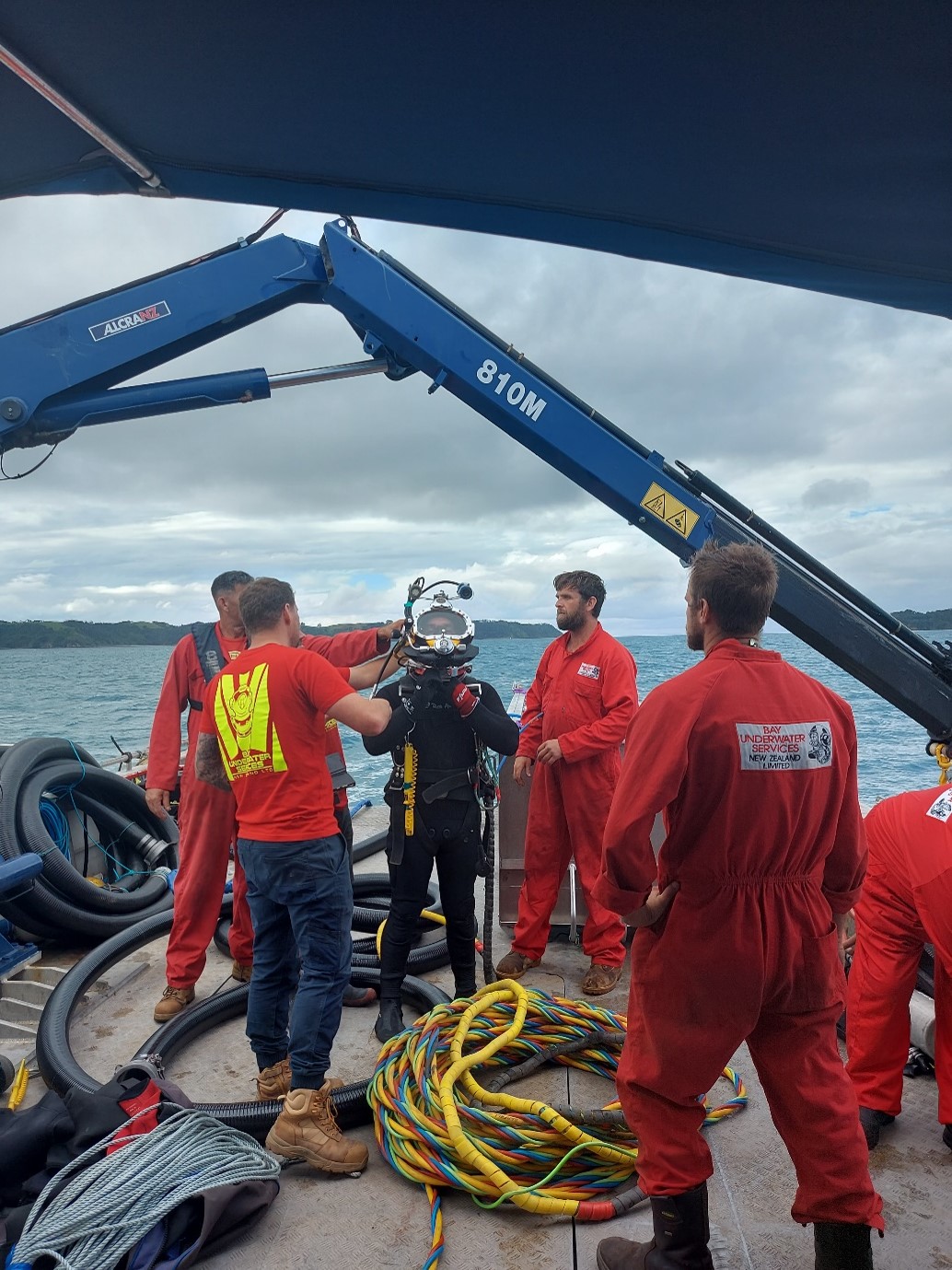
The other accelerated programme projects are:
Exotic caulerpa can spread rapidly, forming large underwater fields.
It can compete with other species for space and upset the balance of local ecosystems. This presents a risk to recreational, cultural, and commercial marine activities.

|
|
Biosecurity New Zealand has been working closely with partners, including mana whenua at affected places, local councils, and communities, to try to stop its spread and investigate potential ways to manage it.
Everyone working in or enjoying our coastal waters can help stop the spread.
Exotic caulerpa can be easily spread as small pieces on vessels (anchors and anchor chains) and other marine equipment, such as dive gear or fishing lines. That's why if you’re out on the water, before you move to a new location, you should always check your anchor and gear for seaweed. If you find any seaweed, bag it and put it in the rubbish on shore.
You can also help by following the legal restrictions on anchoring and fishing that are in place at 3 of the areas with exotic caulerpa.
Find out about the legal restrictions in the 3 areas
Exotic caulerpa was first found in New Zealand in July 2021 at Aotea Great Barrier Island. It has since been discovered at Ahuahu Great Mercury Island, Te Rāwhiti Inlet in Northland, Kawau Island, Waiheke Island, Mokohinau Islands, and Rakino Island.
It is not known where or when exotic caulerpa first entered New Zealand waters. It is considered likely it arrived on a vessel travelling from Australia or the Pacific. The amount found in the various locations suggests it has been here for several years.
Aotea Island [PDF, 863 KB]
Great Mercury Island [PDF, 1.5 MB]
Te Rāwhiti Inlet [PDF, 2.8 MB]
Waiheke Island [PDF, 3.9 MB]
Kawau Island [PDF, 1.9 MB]
Mokohinau Islands [PDF, 1.4 MB]
Rakino Island [PDF, 983 KB]
Legal controls on some anchoring and fishing activities to stop the spread are in place at:
The rules are similar in the 3 areas but with some specific conditions for each location.
Choose a location to see the rules and restrictions in place and maps of the area covered.
The new controlled area extends from Cape Barrier in the south, up the entire western coastline to the southern edge of Port Abercrombie and out to 40 metres deep and including up to the high-tide mark (refer to the map below).
Throughout this area, there are restrictions on some fishing activities that make contact with the seafloor (and can therefore spread exotic caulerpa) – for example using flounder nets, dredging, or bottom trawling.
Anchoring without a specific permit from Biosecurity New Zealand is also prohibited in the entire area marked in red on the map below. At Port Fitzroy (yellow on map), anchoring is allowed without any permit. However, fishing restrictions apply in Port Fitzroy.

Within the whole controlled area (including Port Fitzroy), you can:
Within this area, you cannot:
Controlled Area Notice for Great Barrier Island and Great Mercury Island [PDF, 1.1 MB]
To apply for an anchoring exemption permit (for all areas of the CAN apart from Port Fitzroy), complete the application form and email it to Caulerpa@mpi.govt.nz
Permit application form for anchoring or moving vessels [PDF, 95 KB]
Permitting guidelines for anchoring [PDF, 1.4 MB]
The controlled area at Great Mercury Island takes in the western bays area of the island between Maunganui Point and Ahikopua Point, including Huruhi Harbour, and including the high-tide mark.
Within this area:

Controlled Area Notice for Great Barrier Island and Great Mercury Island [PDF, 1.1 MB]
It is illegal to fish or anchor a vessel in the defined controlled area (refer to the map) of Te Rāwhiti Inlet.
The area under controls is bounded by Whau Point, the south-eastern tip of Te Ao Island, the southern shoreline of Poroporo Island and the northern tip of Tokatokahau Point up to the high-tide area.
Under the CAN, it is illegal to remove any marine life (including fish, shellfish, koura (crayfish) or seaweed from the zone. This means any form of fishing is banned. This includes spearfishing, crayfishing, kina and other shellfish gathering, net fishing and drift fishing from any kind of vessel.
It is also illegal to take vessels or dive gear (for example, wetsuits, fins, tanks) into the controlled area for fishing.
No anchoring is allowed in the controlled area other than for a very few permitted activities such as for scientific research or where residents are reliant on a vessel for regular transport. For those activities, you'll need to get a permit from us. Anchoring in an emergency (for example, to shelter from weather) is allowed without a permit.
Permit application form for anchoring or moving vessels [PDF, 95 KB]
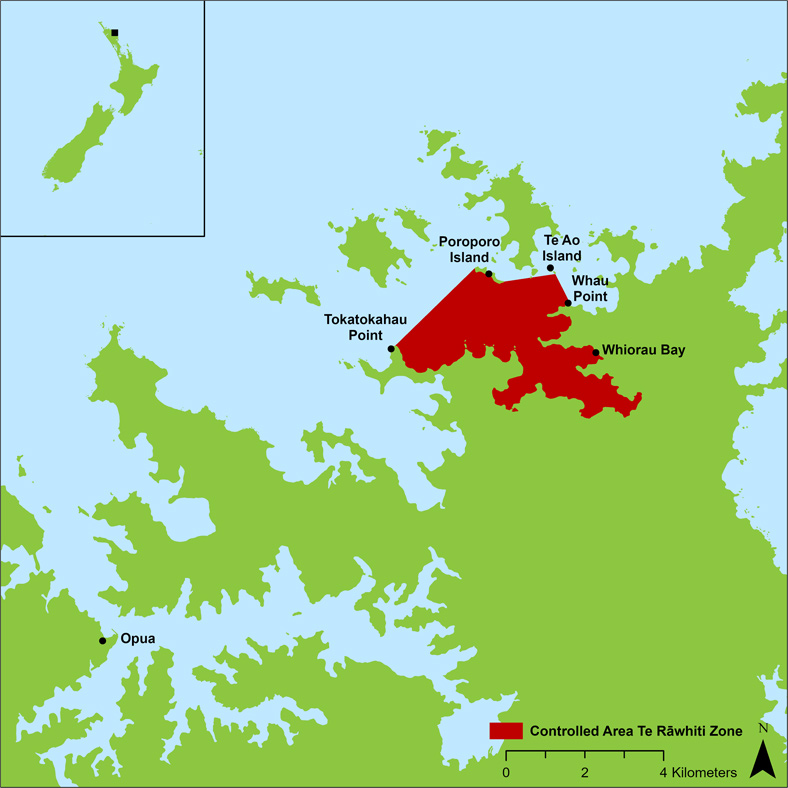
Detailed caulerpa Controlled Area Notice map: Te Rāwhiti [PDF, 1.8 MB]
Controlled Area Notice for Te Rāwhiti Inlet [PDF, 710 KB]
Mana whenua have imposed rāhui in these 3 areas with the same restrictions.
Exotic caulerpa has been found at Waiheke Island and while there is no Controlled Area Notice at this location, Ngāti Paoa has imposed a rāhui on disturbing the seabed or anchoring within 1 nautical mile (1.8 kilometres) of Thompson's Point or Onetangi Bay.
Find out more about the Waiheke Island rāhui – Ngāti Paoa
In general, it’s safest to avoid the known areas of caulerpa when boating and fishing.

Keep an eye out for exotic caulerpa species and report suspected sightings to us. Take a photo, if possible, and note the location. Then either:
Watch our video and view other images to help you identify exotic caulerpa
It’s easy to accidentally move exotic caulerpa to new locations, caught up in your anchor and anchor chain, and other equipment such as dive or fishing gear.
The exotic seaweeds Caulerpa brachypus and Caulerpa parvifolia are closely related and appear identical.
They have green fronds up to 10 centimetres long in the shape of oar blades that rise from long runners or roots known as stolons.
They can be found growing below the tideline at between 2 metres and 35 metres deep and on both hard surfaces and in sandy areas. When established, exotic caulerpa can cover large areas of the seafloor in dense mats.
Our images of caulerpa, both in the sea and washed up on shore, will help you recognise the seaweeds.
Video: How to identify and report exotic caulerpa – YouTube

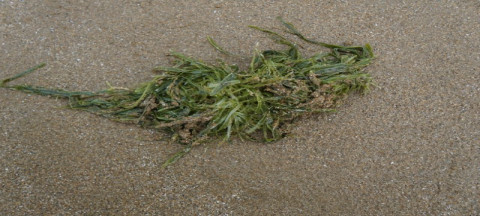
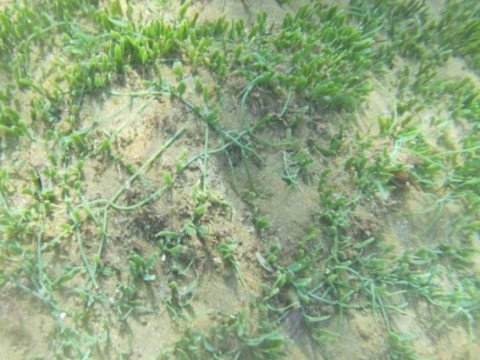

From the outset of our response to exotic caulerpa in mid-2021, the scientific advice and international experience has told us that eradication (full and permanent removal) of this pest is highly unlikely given the:
Despite this, experts have continued to explore and trial options for killing the seaweed in the hope of finding techniques that could help remove, for example, new and small outbreaks or knock back larger populations to try to reduce further spread.
Find out about the technical advice on our response, including suction dredging and other research
Caulerpa ID guide for divers and other ocean users [PDF, 3.7 MB]
Stop exotic caulerpa seaweed poster [PDF, 2.4 MB]
Stop exotic caulerpa seaweed – Flyer [PDF, 1.3 MB]
Information about Controlled Area Notice at Aotea Great Barrier Island and Ahuahu Great Mercury Island – Brochure [PDF, 2.3 MB]
Information about Controlled Area Notice at Te Rāwhiti, Northland – Brochure [PDF, 1.9 MB]





MPI uses cookies to improve your experience on our site. By using our website, you accept our use of cookies.
